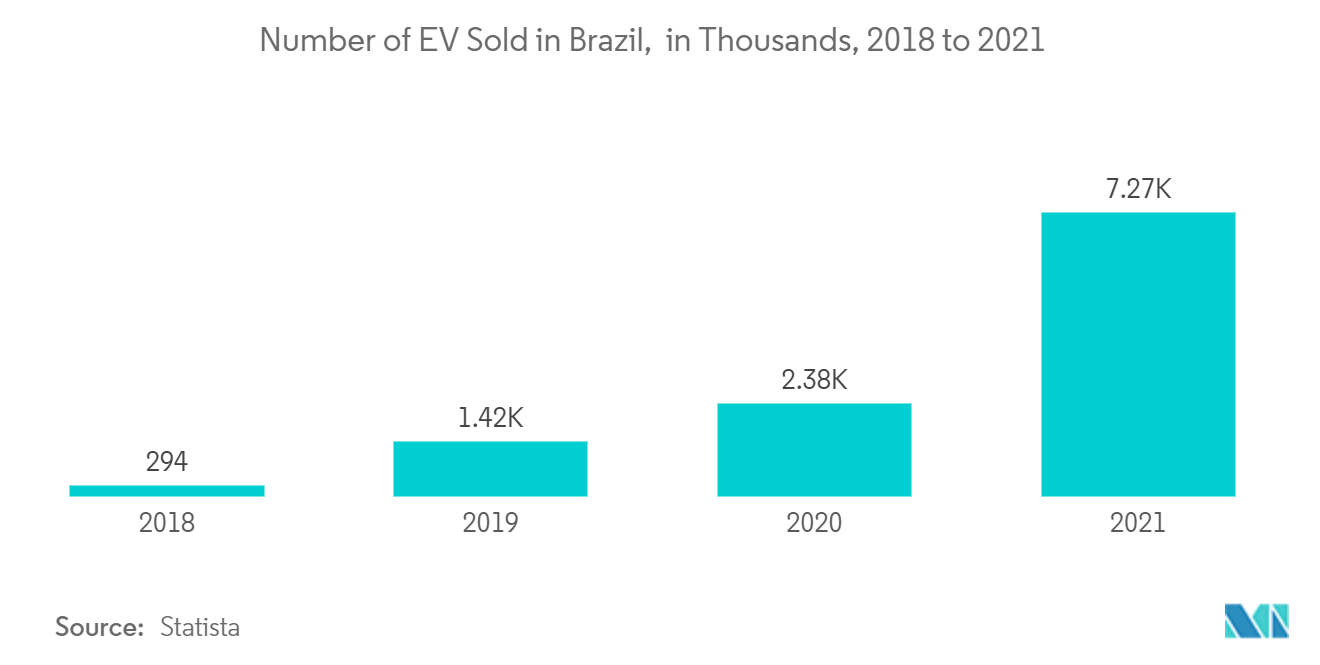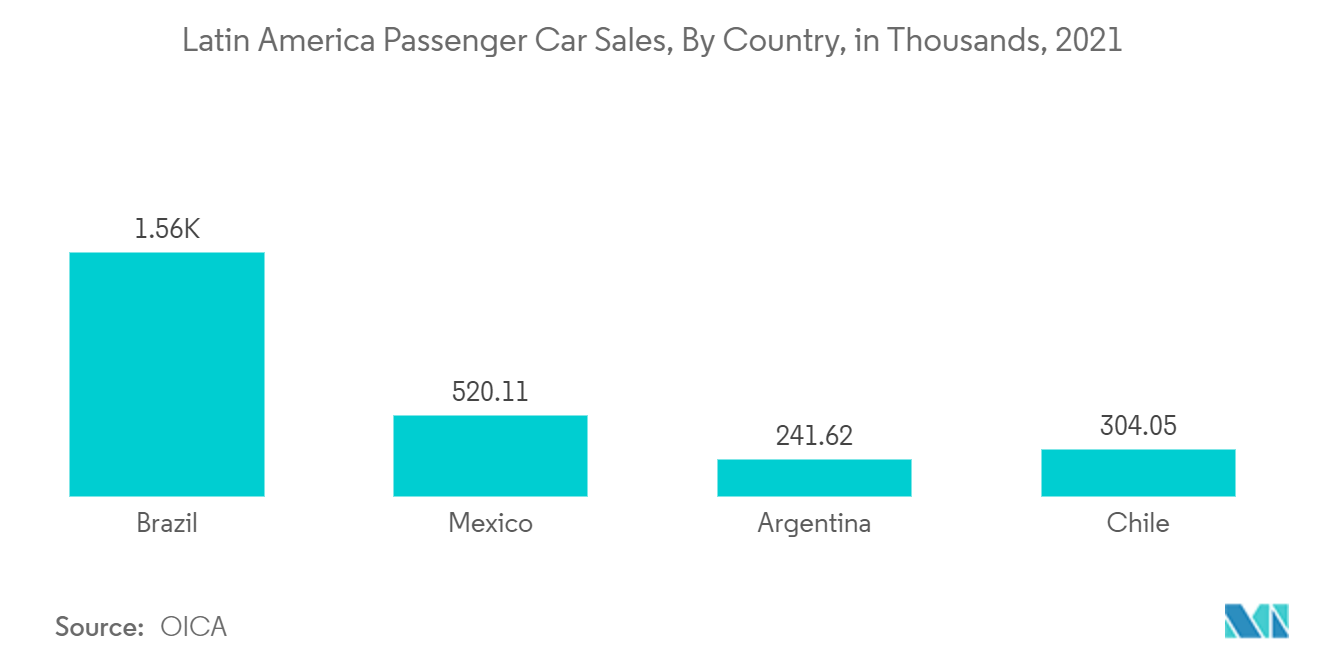Market Trends of Latin America Passenger Car Industry
This section covers the major market trends shaping the Latin America Passenger Car Market according to our research experts:
Zero Emission Vehicles Gaining Traction in Latin America
Although the passenger car industry in Latin America is dominated by gasoline, ethanol-driven cars recorded good sales during the last three years.
Electric vehicles (EVs4) are being adopted in some Latin American passenger car markets. Due to their larger market sizes, Mexico and Brazil have higher EV sales but lower market shares. Among Latin American countries, Mexico is the only ZEVTC member. In Latin America, as in other developing regions, electric passenger car adoption is still in its early stages. Major EV players are trying to enter the market in Brazil.
For instance, in November 2022, BYD Co. Ltd, a Chinese automaker, announced that it would begin selling two new electric vehicle models in Brazil, banking on positive political and environmental developments in Latin America's largest vehicle market.
International financial agencies and development organizations such as the Global Environment Facility (GEF), the United Nations (UN), the National Finance Corporation (CFN), the Central American Bank for Economic Integration, and the European Union have provided financial and technical assistance to Latin American countries for ZEV transitions. Over the last five years, these organizations have provided non-profit funding of USD 7.4 million and a loan of USD 7.6 million to at least six countries for technical and financial feasibility studies of electric vehicles, fleet deployment, and policy interventions and demonstration projects. Non-profit funding ranges from USD 40,000 to USD 2.4 million per country, depending on the area of intervention.
- The current level of international support falls far short of what is required to enable non-ZEVTC countries in the region to leapfrog to ZEVs. A five-year goal of increasing cumulative ZEV sales to 10% of 2020 passenger vehicle, bus, and 2 and 3-wheeler sales would necessitate funding at a rate of USD 30 per kWh11 of battery capacity, or approximately USD 1.1 billion. This is a rough estimate, but it demonstrates the disparity between existing and needed international assistance. The funding could be used for a variety of purposes, including, but not limited to, technical assistance, policy interventions, R&D, infrastructure, financial incentives, localization of the ZEV value chain, and loan service to help Latin America leapfrog ZEVs.

Recovering Automotive Industries in Brazil, Argentina, and Peru
The Latin American market has enormous potential for the automotive industry as car ownership is low in the region, and disposable incomes are growing faster than in the Asia-Pacific region. The automotive industry experienced healthy growth. In terms of unit sales, Brazil was the largest market last year. Mexico came in second, with approximately 520,110 thousand cars sold that year.
Brazil has traditionally used protectionist policies as part of its Inovar Auto Policy to protect domestic automakers from imports by offering tax breaks and other incentives. However, the policy's impact was boosted by increased domestic competitiveness and a decrease in imports. The policy made no provision for export promotion, which harmed the industry when domestic demand fell.
- Moreover, major players are indulging in collaboration with finance companies in Brazil to provide financial support to the customers and support the growth of the market in the coming years. For instance, in October 2022, BYD, the Chinese new energy vehicle and battery giant, formally signed a strategic cooperation agreement with Santander's Brazilian division, a domestic auto finance industry leader.
Argentina is the Brazilian auto industry's largest export market, but sales have dropped due to the Argentine economy's downturn. In September 2019, Brazil and Argentina renewed their auto trade agreement, allowing increased Brazilian exports to its neighbor through 2029 but postponing free trade in motor vehicles for the next decade.
Furthermore, Peru has experienced rapid economic growth over the last five years and is poised to become one of Latin America's leading automotive players. This is due to factors such as Peru's open market strategy, which has resulted in the establishment of new free trade agreements (FTAs) with Asian countries, the Association of Southeast Asian Nations (ASEAN), and North America.
- Several major automakers, including General Motors, Subaru, and Land Rover, have made investments in the Latin American market. Furthermore, with the implementation of new vehicle tax breaks, automobile sales are expected to skyrocket.


